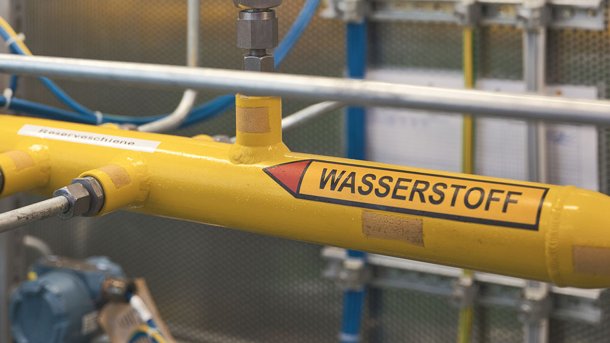Field test: heating with hydrogen from the existing gas grid is possible
One winter, a number of households in Germany used 100 percent hydrogen to heat their homes via the existing pipeline network for the first time.

(Image: Zukunft Gas)
Households that heat with natural gas can easily be converted to hydrogen. This is the result of the H2Direkt pilot project in the Bavarian town of Hohenwart near Ingolstadt. For the first time in Germany, ten private households and one commercial customer have been heating with 100 percent hydrogen via a gas distribution network previously operated with natural gas for one heating period since the end of September 2023.
At the end of the heating period, the three project partners Energie Südbayern, Energienetze Bayern and Thüga draw a positive conclusion. "The changeover went smoothly. Even at temperatures as low as minus 15 degrees, we could rely on the entire hydrogen infrastructure and the new heating systems."
Grid is fit for purpose
The main focus of the project was to determine whether the existing infrastructure in the grid and in households was suitable for hydrogen. This has now been proven, said Michael Schneider, Managing Director of Energienetze Bayern. Energie Südbayern and the energy service provider Thüga were also involved in the project.
Nothing had to be converted on the grid itself. The heating systems in the households were replaced with 100% H2 condensing boilers from Vaillant, and the gas meters were also replaced. According to Thüga, no leaks were detected during the regular inspection of all pipes and infrastructure components in the network and in the cellars. The customers involved were regularly asked for feedback and were very satisfied.
Similar handling
Mathias Stierstorfer from Energienetze Bayern said that the employees involved had been seamlessly integrated into the new processes. This applies, for example, to readjustments to individual systems, adjusting parameters or the usual venting of radiators for new installations. Basically, the operation of the network with hydrogen hardly differs from that with natural gas. The odorant THT is also added to hydrogen because, like natural gas, it cannot be detected by human noses if a pipe is leaking.
The capacity of the distribution network is suitable for hydrogen with its increased flow rate, the project operators added. The results of the H2Direkt project could be transferred to other network areas, for example to supply customer groups from industry and commerce.
The Federal Ministry of Economics is initially planning a hydrogen core network almost 10,000 kilometers long for such customers. Network operator Netze BW Öhringen in north-eastern Baden-Württemberg has tested whether the existing gas distribution networks are also capable of transporting hydrogen. There, up to 30 percent hydrogen was fed into the natural gas network in real network operation.
(anw)